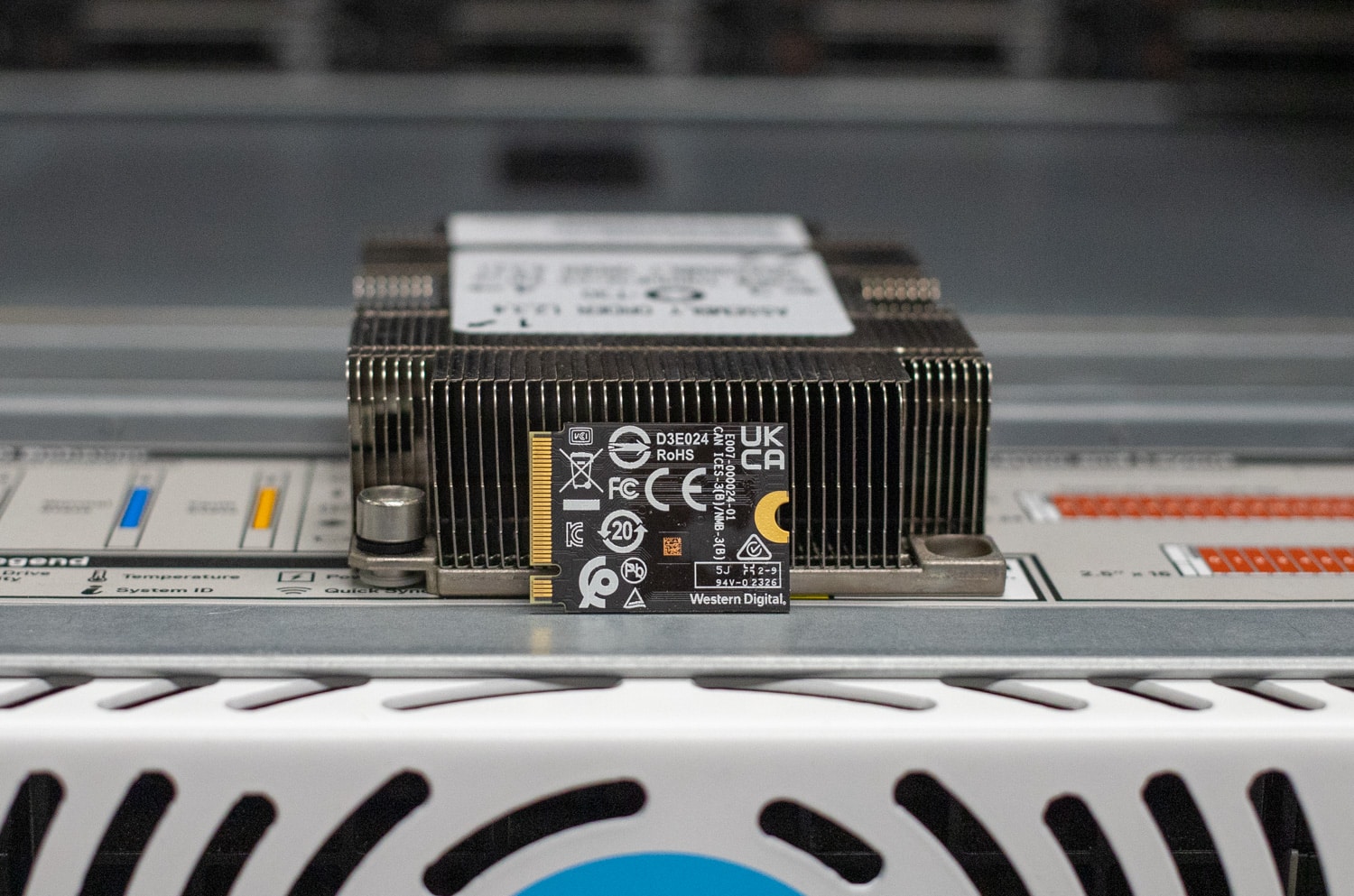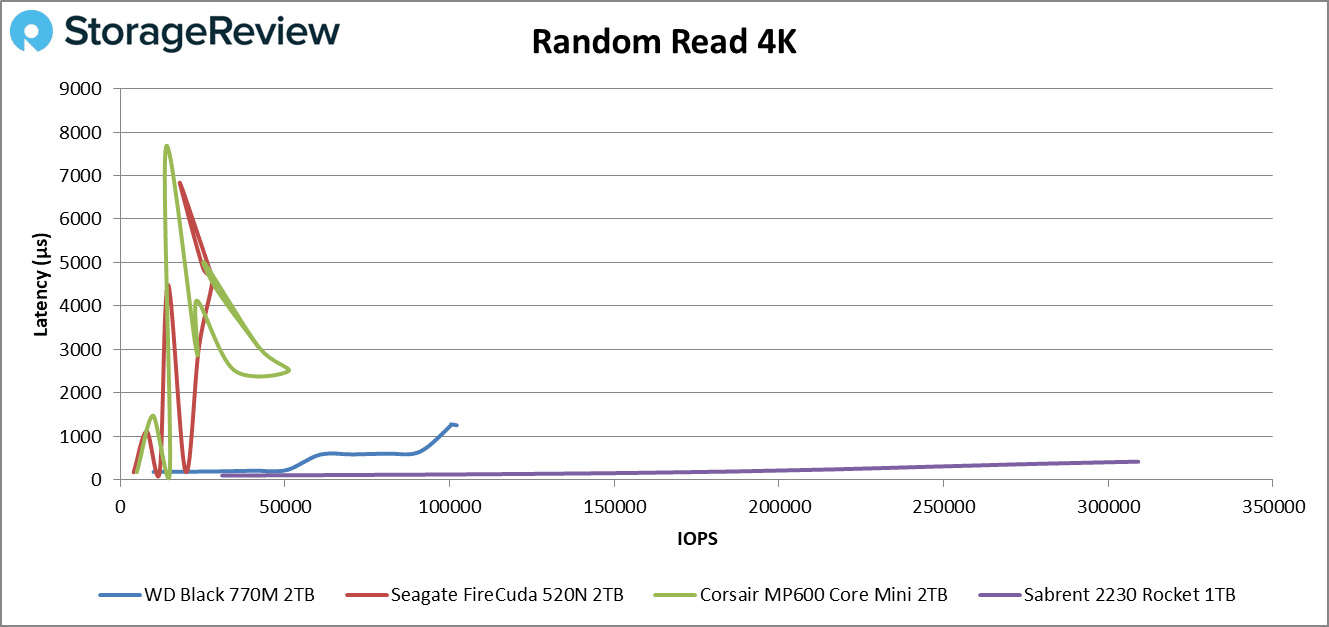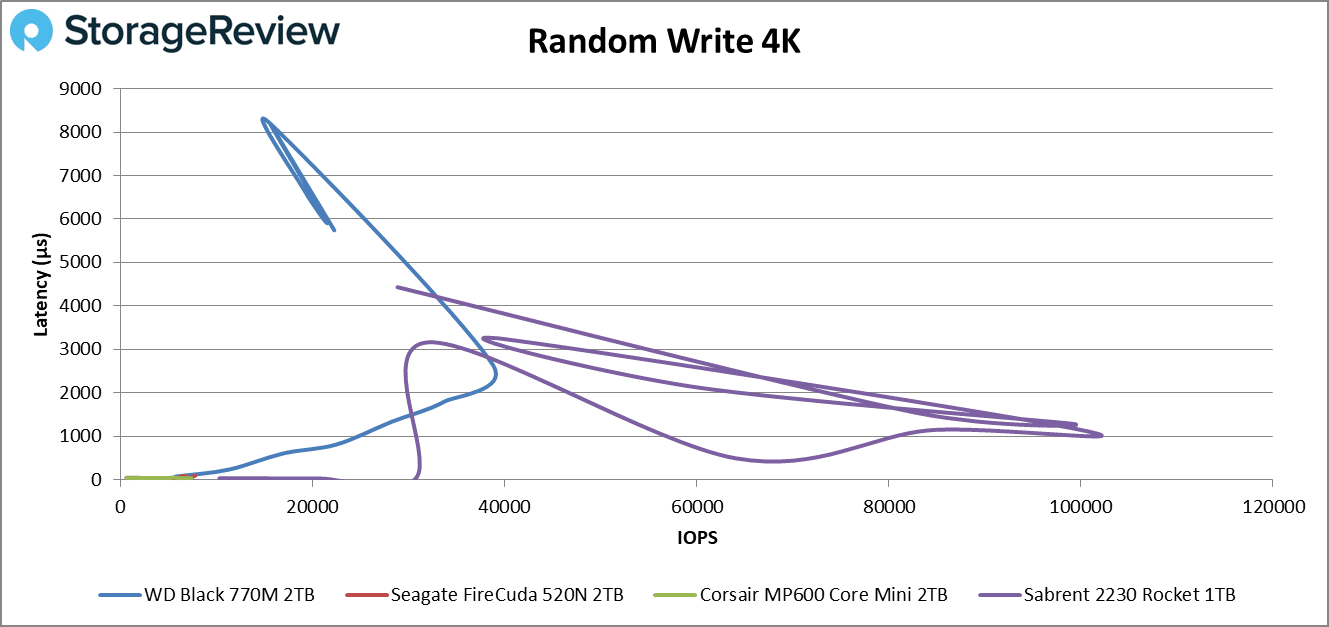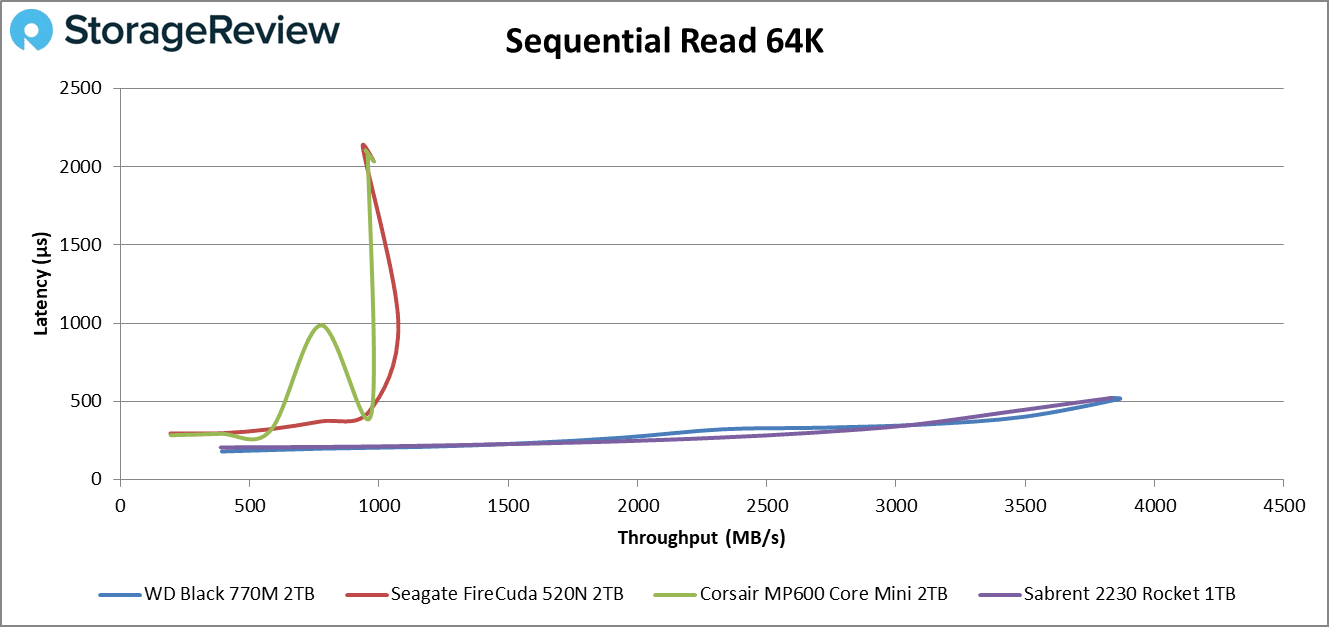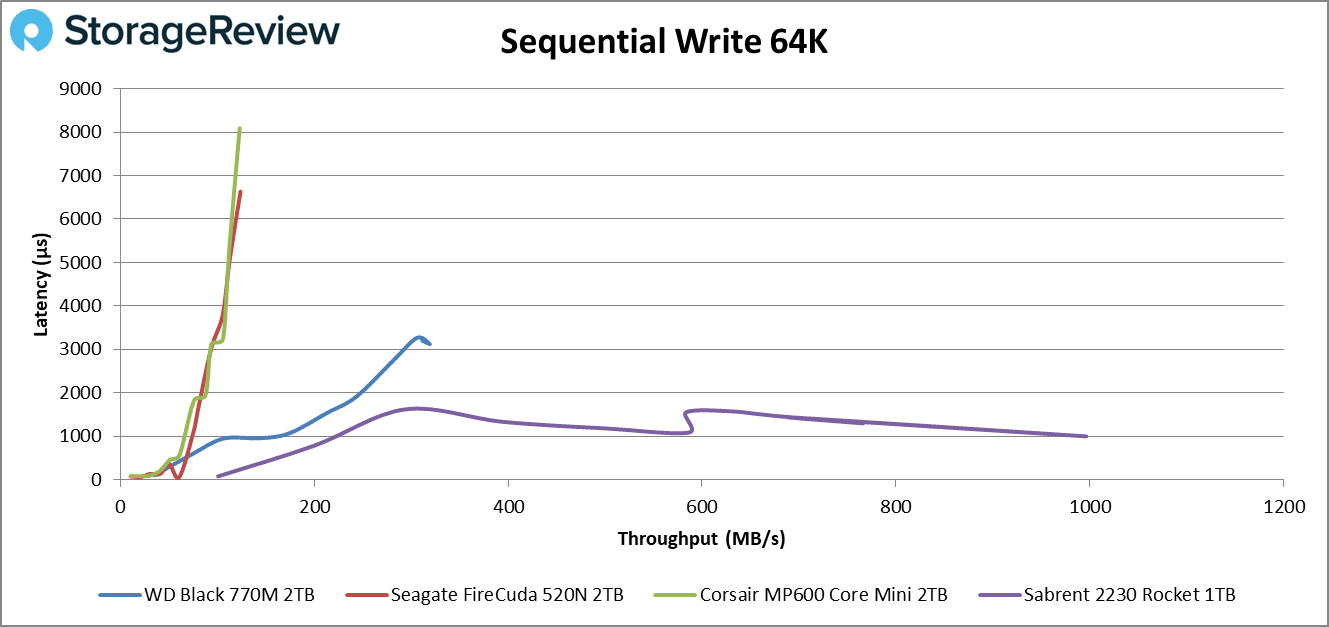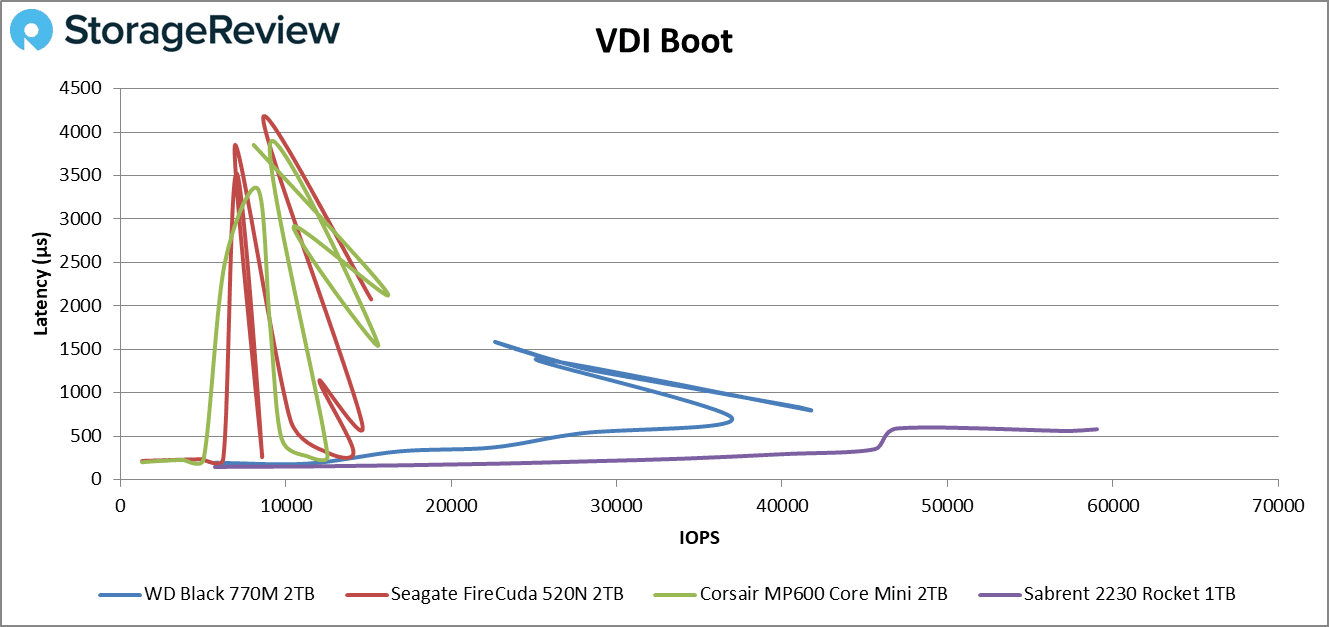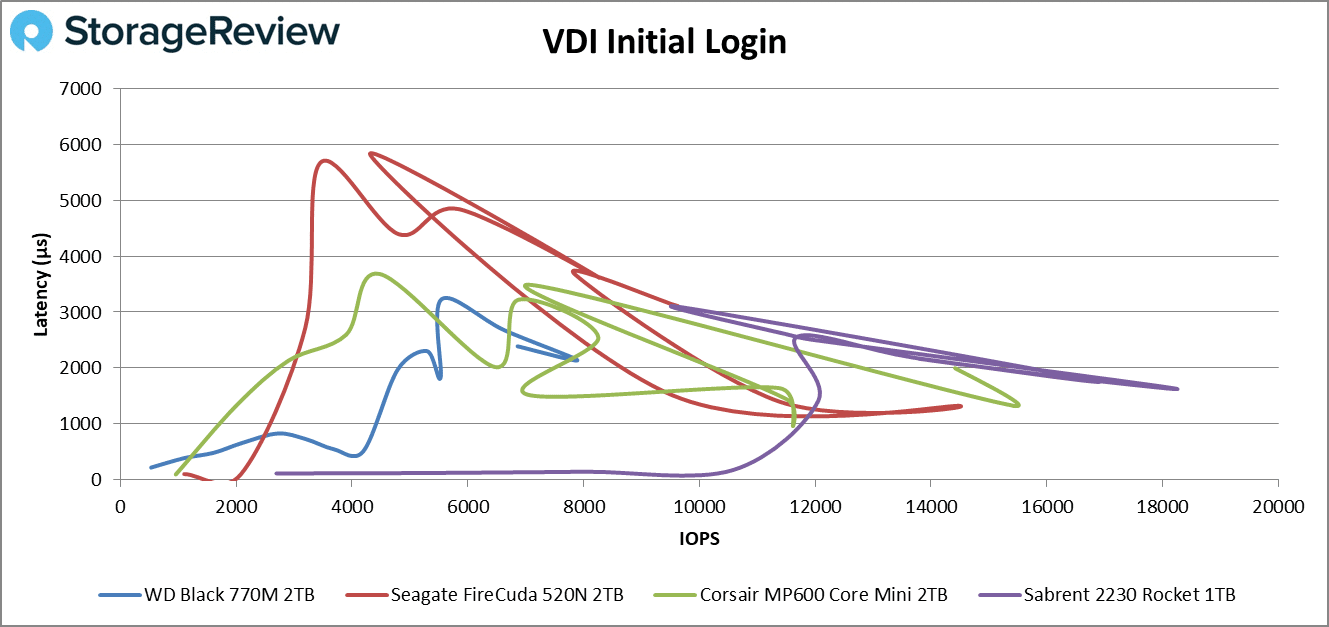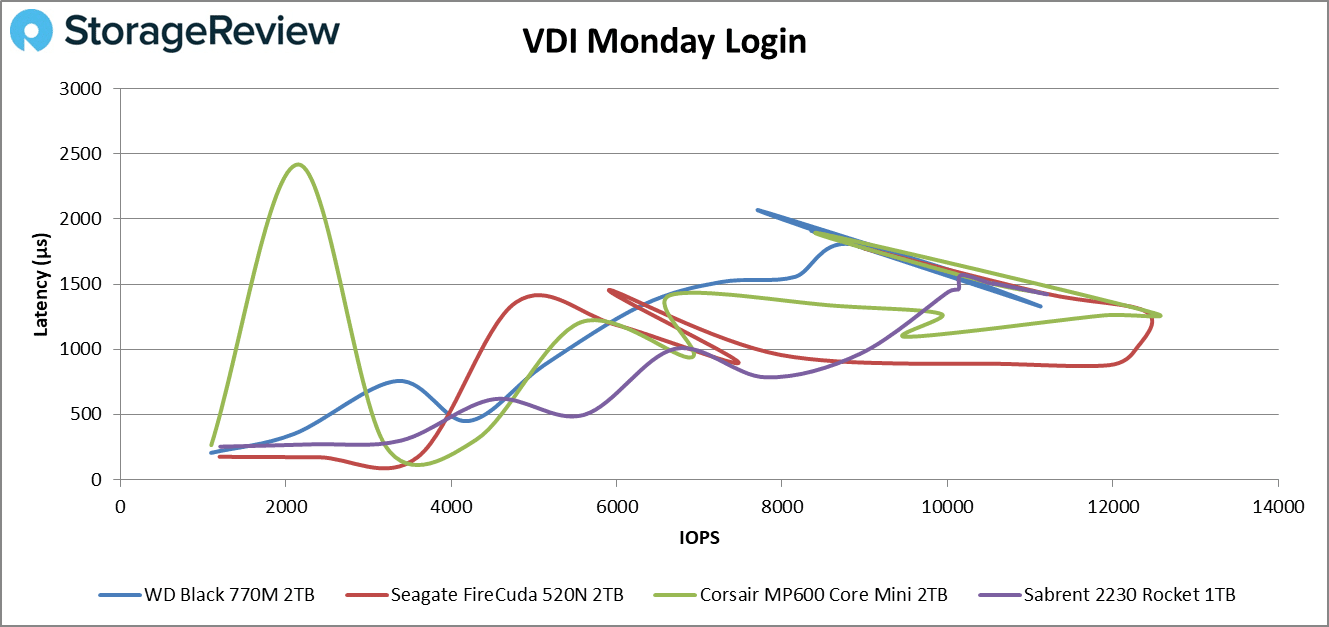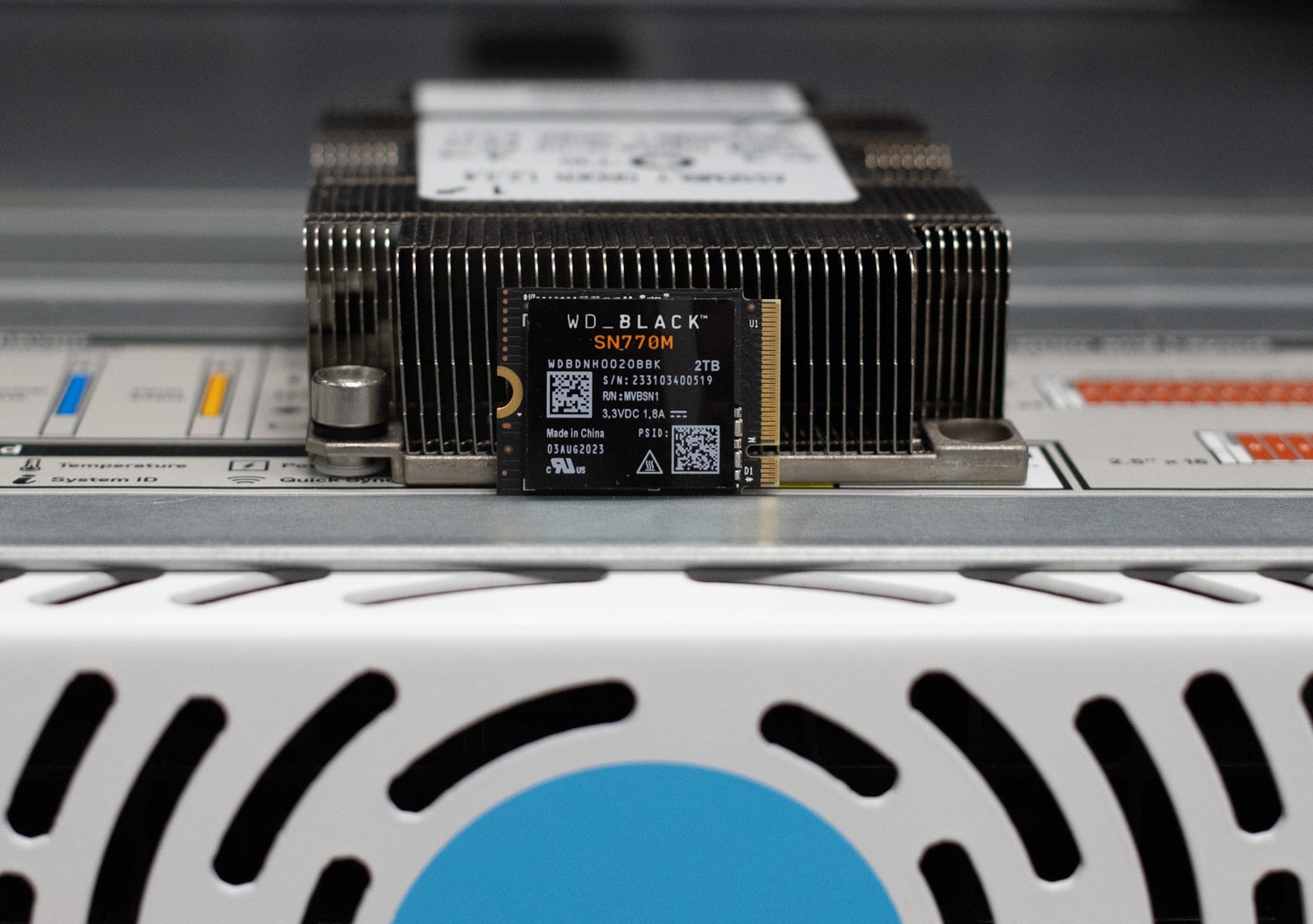With the demand for 2230 form-factor SSDs increasing, WD jumped in and released their WD Black SN770M SSD for small form-factor devices. The WD Black SN770M is oriented as a storage upgrade for the Steam Deck and ROG Ally, as well as other small form-factor devices that may utilize the short 2230 drive. Using both in-house TLC NAND and controller, this drive performs pretty strongly, but the results will come in later.
With the demand for 2230 form-factor SSDs increasing, WD jumped in and released their WD Black SN770M SSD for small form-factor devices. The WD Black SN770M is oriented as a storage upgrade for the Steam Deck and ROG Ally, as well as other small form-factor devices that may utilize the short 2230 drive. Using both in-house TLC NAND and controller, this drive performs pretty strongly, but the results will come in later.
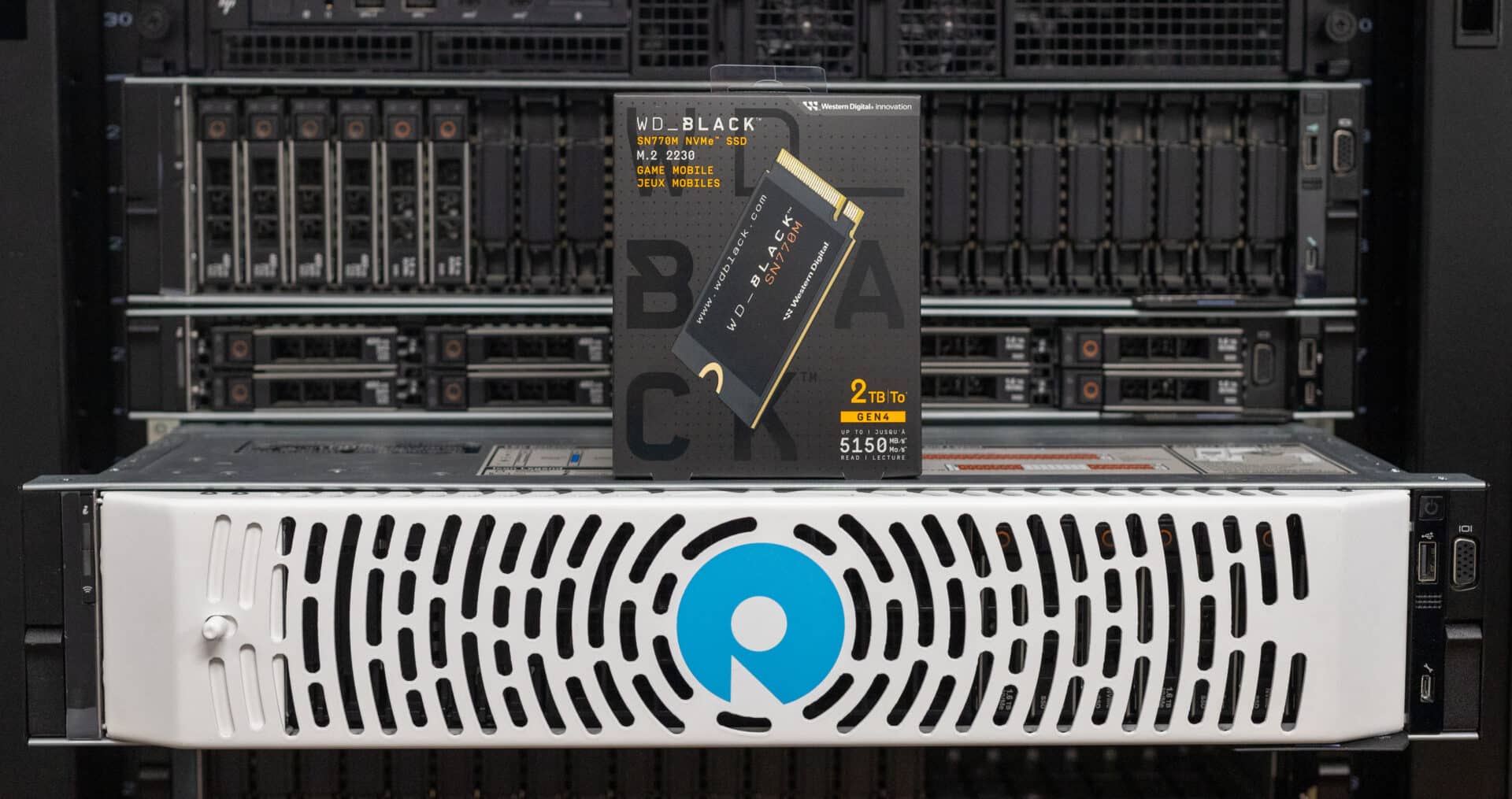
WD Black SN770M Specifications
WD offers 3 different capacities of the SN770M with 500GB,1TB, and 2TB versions available.
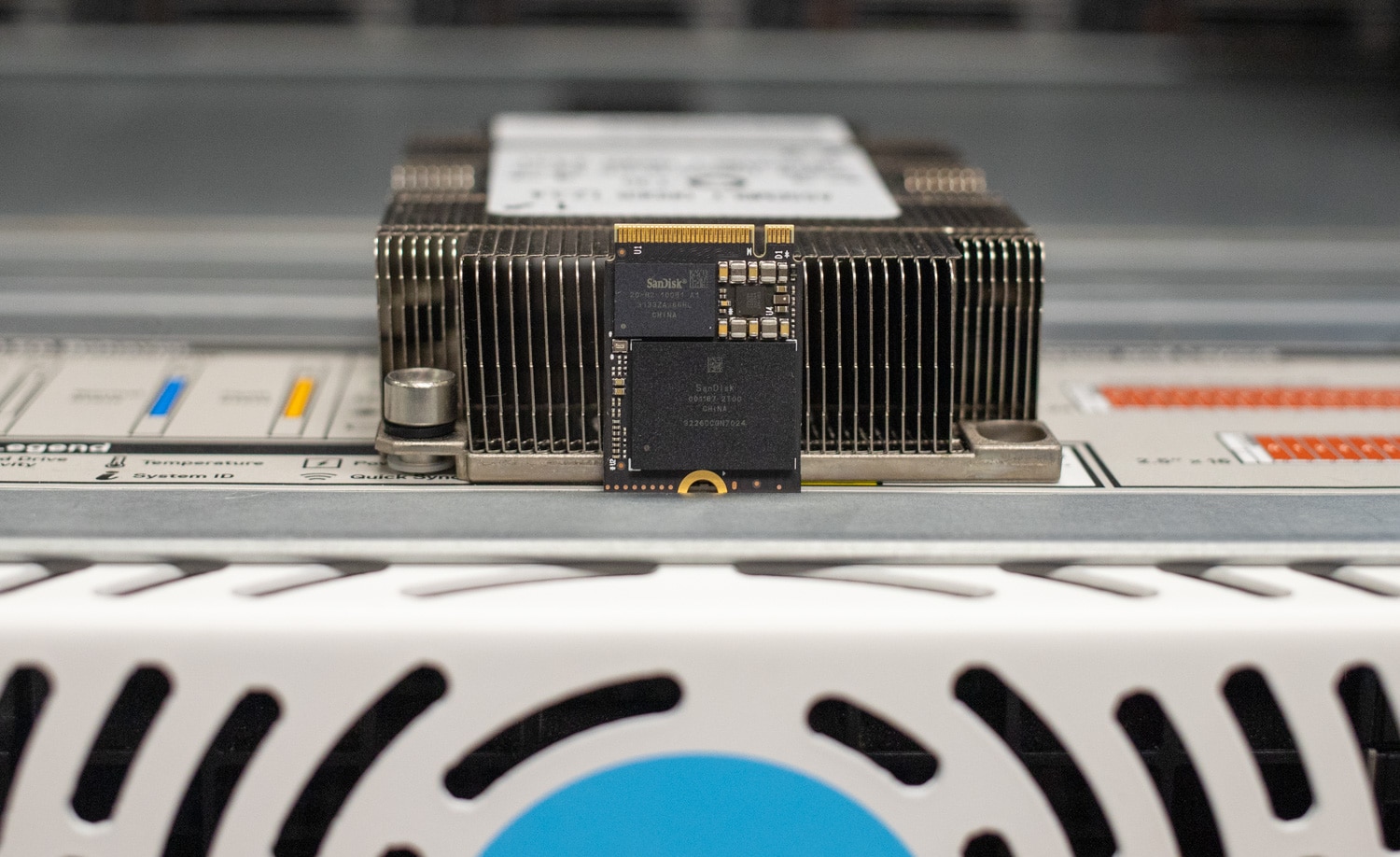
| Model | WDBDNH5000ABK-WRSN | WDBDNH0010BBK-WRSN | WDBDNH0020BBK-WRSN |
| Capacity | 500GB | 1000GB | 2000GB |
| NAND | Western Digital TLC NAND | ||
| Controller | Western Digital Controller | ||
| Interface | NVME PCIe Gen4x4 | ||
| Max Sequential Read | 5,000MB/s | 5,150MB/s | 5,150MB/s |
| Max Sequential Write | 4,000MB/s | 4,900MB/s | 4,850MB/s |
| Random 4KQD32 Read IOPS | 460K IOPS | 740K IOPS | 650K IOPS |
| Random 4KQD32 Write IOPS | 800K IOPS | 800K IOPS | 800K IOPS |
| Form Factor | M.2 2230 | ||
| Operating Temperature | 0-85C | ||
| Warranty | 5 years | ||
| TBW | 500GB | 1000GB | 2000GB |
At the time of this review, the pricing for these drives is as follows; $79.99 (500GB affiliate link), $129.99 (1TB), and $169.99 for and $239.99 (2TB). These Black Friday prices have passed but it is a signal for what is to come.
WD Black SN770M Performance
Now to the testing. We have the 2TB variant of the WD Black 770M, the 2TB Seagate FireCuda 520N, 2TB MP600 Core Mini, and 1TB Sabrent 2230 Rocket to put against each other.
VDBench Workload Analysis
When it comes to benchmarking storage devices, application testing is best, and synthetic testing comes in second place. While not a perfect representation of actual workloads, synthetic tests do help to baseline storage devices with a repeatability factor that makes it easy to do apples-to-apples comparisons between competing solutions. These workloads offer a range of different testing profiles ranging from “four corners” tests, and common database transfer size tests, to trace captures from different VDI environments.
All of these tests leverage the common vdBench workload generator, with a scripting engine to automate and capture results over a large compute testing cluster. This allows us to repeat the same workloads across a wide range of storage devices, including flash arrays and individual storage devices. Our testing process for these benchmarks fills the entire drive surface with data, then partitions a drive section equal to 5% of the drive capacity to simulate how the drive might respond to application workloads. This is different than full entropy tests which use 100% of the drive and take them into a steady state. As a result, these figures will reflect higher-sustained write speeds.
Profiles:
- 4K Random Read: 100% Read, 128 threads, 0-120% iorate
- 4K Random Write: 100% Write, 64 threads, 0-120% iorate
- 64K Sequential Read: 100% Read, 16 threads, 0-120% iorate
- 64K Sequential Write: 100% Write, 8 threads, 0-120% iorate
- Synthetic Database: SQL and Oracle
- VDI Full Clone and Linked Clone Traces
Random and Sequential Read/Write tests
We start with Random Read 4K, Where the SN770M topped out at 102,156 IOPS and 1,250µs, ahead of the Firecuda 520N and MP600 Mini. The Firecuda and MP600 came in at 28,791 IOPS and 51,082 IOPS respectively with some instability. In this test, the Sabrent 2230 Rocket performed the best reaching 309,092 IOPS. The biggest contributor to these performance differences seems to fall on the usage of QLC NAND for the MP600 and Firecuda vs the TLC used on the Sabrent and WD drives. The SN770M and Rocket also have different controllers than the other two drives.
Next up is Random Write 4k, and the SN770M got 38,797 IOPS here and a little bit of weirdness with the latency, peaking at 8,202µs. The Rocket was surprisingly all over the place but ended at 100,342 IOPS. The Firecuda and MP600 Mini also got slow but steady writes at 7,791 IOPS on the Firecuda and 7,380 IOPS on the MP600.
In the Sequential Read 64k test, We see steady results again from the SN770M and Rocket just barely passing 500µs of latency with the SN770M getting 3,864 MB/s and the Rocket getting 3,834 MB/s. The MP600 and Firecuda are right next to each other again with their throughput getting 981MB/s and 1,075MB/s respectively but at a higher latency with both hovering around 2100µs.
For Sequential Write 64k, we see a little bit of instability on WD and Rocket drives but better than the other two. The SN770M made 318MB/s peaking at 3263µs and the Rocket made 996MB/s with only 1,619µs of latency. The MP600 and Firecuda were pretty close again with both drives getting 123MB/s but the MP600 hitting 8,092µs of latency, and the Firecuda getting 6,634 µs.
VDI Tests
For the VDI Boot test, the SN770M freaked out a little but stayed mostly stable making 41,686 IOPS at a max of 1,581µs but still behind the Rocket. The Rocket made 59,038 IOPS here at 579µs. Additionally, the MP600 and Firecuda were all over the board but making 16,176 IOPS and 15,164 IOPS respectively. Latency-wise, the MP600 hit 3,888µs and the Firecuda hit 4,167µs.
For VDI Initial Login, the results are all over the board, but surprisingly the MP600 and Firecuda pulled ahead of the SN770 but still behind the Rocket. Surprisingly the SN770 fell back only making 7,892 IOPS but only hit 3,230µs, whereas the MP600 made 15,384IOPS at 3,684µs and the Firecuda fell back at 14,491 IOPS and 5,812µs. And the Rocket held as the fastest at 18,070 IOPS and only 3,128µs of latency.
The Last test is VDI Monday Login, where the SN770 made 11,125 IOPS and 2,066µs. The MP600 did hit the highest latency at 2419µs but passed all of the other drives with 12,503 IOPS. Performing pretty closely was the Firecuda with 12,407 IOPS and 1,775µs. Next was the Rocket with 11,203 IOPS and 1,569µs pulling just faster than the SN770.
Conclusion
The WD Black SN770M joins the race to fill slots in small portable gaming systems along with thin and light PCs and tablets. After looking at two less impressive 2230 SSDs recently, the SN770M comes to market with a reasonable performance and price combo.
The WD SN770M is a well-performing 2230 SSD, staying in the middle of most of our performance numbers. Price wise the sale price sets it just below the Sabrent, with the performance numbers accurately reflecting the pricing. Overall this drive performed well enough to be a solid middle-ground choice in 2230 drives and still not sacrifice huge amounts of performance.
Links for our reviews on the other drives mentioned in this review are as follows: Corsair MP600 Core Mini, Seagate Firecuda 520n, and Sabrent Rocket 2230.
Engage with StorageReview
Newsletter | YouTube | Podcast iTunes/Spotify | Instagram | Twitter | TikTok | RSS Feed

